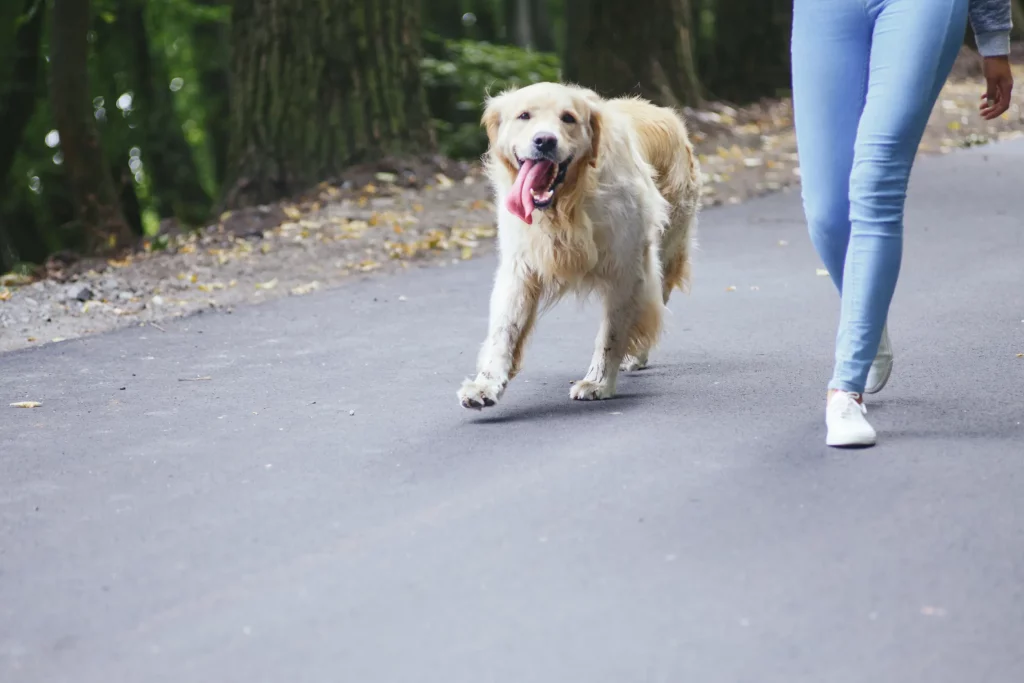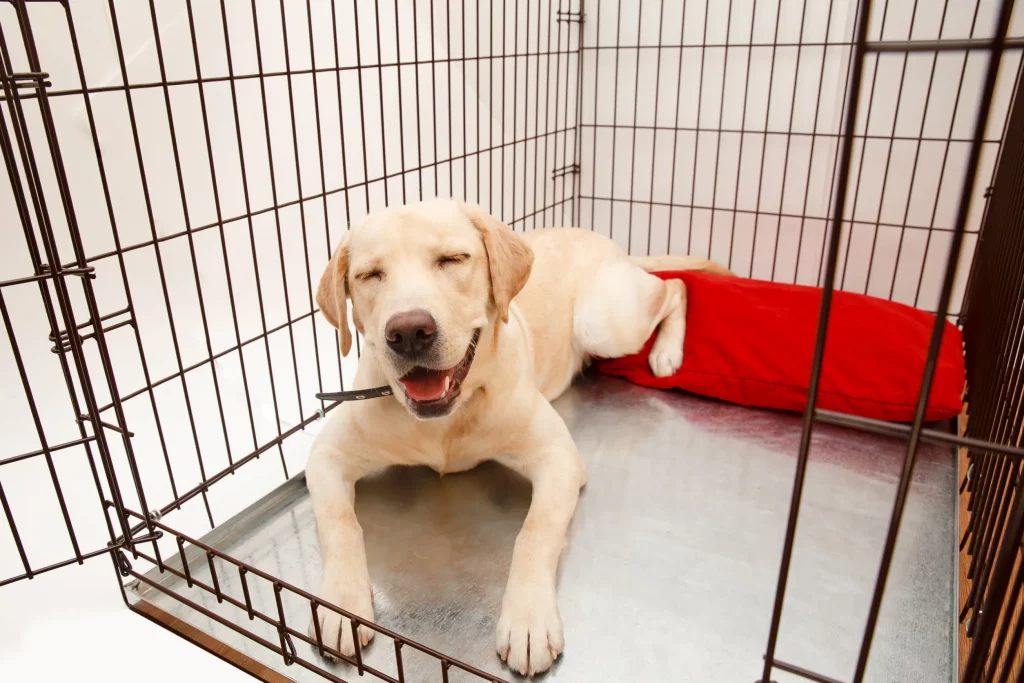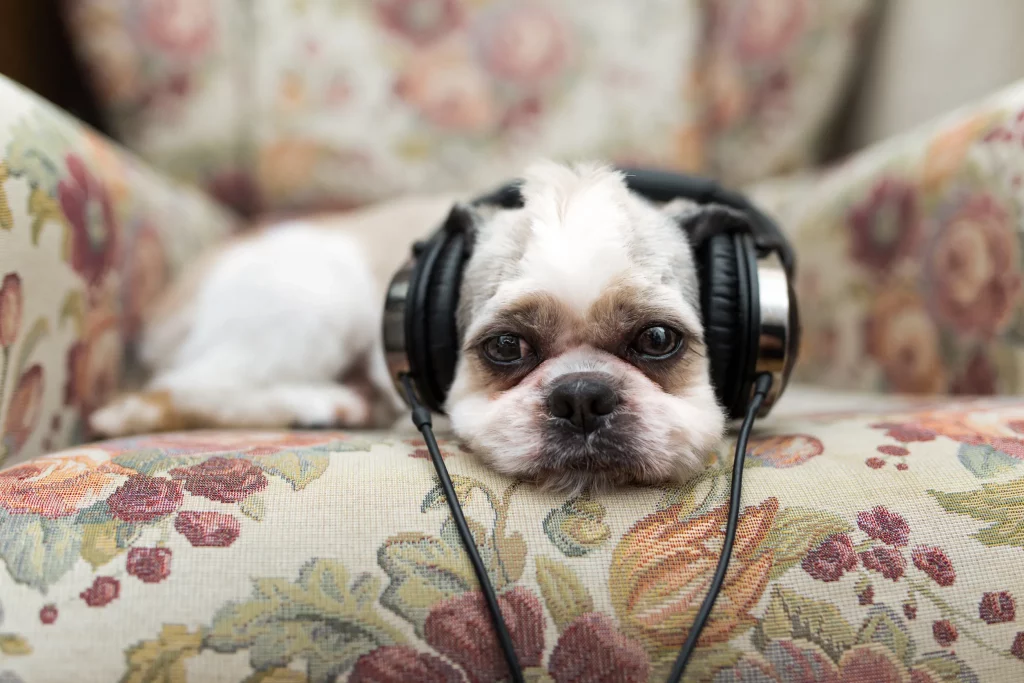Having a dog with anxiety can be challenging, especially when they start whining excessively. Not only can it disrupt the peace in your home, but it can also be a sign of distress for your furry friend. Fortunately, there are several things you can do to help calm your dog’s anxiety whining and restore harmony in your household.

Understanding Your Dog’s Anxiety Whining
Anxiety whining is a vocalization behavior that dogs engage in when they are feeling anxious or stressed. It is their way of expressing their discomfort and seeking attention or reassurance.
Dogs, being highly social animals, rely on communication to convey their emotions, and whining is just one of the ways they do so. By understanding the underlying causes of anxiety whining, you can provide your furry friend with the support and care they need.
Signs of Anxiety Whining in Dogs
Common signs of anxiety whining in dogs include pacing, panting, restlessness, trembling, and excessive vocalization. Dogs may exhibit these behaviors when they feel overwhelmed or uneasy in certain situations.
For example, if your dog starts whining excessively when you’re about to leave the house, it may be a sign of separation anxiety. On the other hand, if your dog becomes restless and whines during a thunderstorm, it could be due to a fear of loud noises. It’s important to pay attention to these signs and take appropriate action to alleviate your dog’s anxiety.
Additionally, dogs experiencing anxiety whining may also show signs of destructive behavior or clinginess. They may chew on furniture, shoes, or other household items as a way to cope with their anxiety.
Some dogs may also become excessively clingy, seeking constant physical contact and reassurance from their owners. These behaviors can be distressing for both the dog and their human companions, highlighting the importance of addressing the underlying anxiety.

Common Triggers for Anxiety Whining
Anxiety whining can be triggered by various factors, and identifying these triggers is crucial in addressing your dog’s anxiety. Separation anxiety is a common trigger, where dogs become anxious and distressed when separated from their owners. This can occur when you leave the house or even when you’re in a different room. Dogs with separation anxiety may exhibit excessive whining as a way to express their fear and seek comfort.
Another trigger for anxiety whining is a fear of loud noises. Dogs with noise phobias may become anxious and whine excessively when exposed to thunderstorms, fireworks, or other loud sounds.
This fear response is their way of expressing their discomfort and seeking safety. Understanding this trigger can help you create a calm and secure environment for your dog during such events.
Changes in routine or unfamiliar environments can also trigger anxiety whining in dogs. Dogs are creatures of habit, and disruptions to their routine or exposure to new and unfamiliar situations can cause them stress.
Whether it’s a change in their feeding schedule, a new house, or a different walking route, dogs may express their anxiety through whining. By gradually introducing changes and providing a sense of stability, you can help alleviate their anxiety and reduce whining.
Overall, understanding your dog’s anxiety whining requires careful observation and empathy. By recognizing the signs and triggers of anxiety, you can tailor your approach to support your dog’s emotional well-being. Remember, patience and consistency are key in helping your furry friend overcome their anxiety and live a happier, more relaxed life.
The Importance of Calming Your Dog’s Anxiety
Calming your dog’s anxiety is crucial not only for their well-being but also for the overall peace in your household. Anxiety can take a toll on your dog’s physical and mental health and impact their quality of life. By addressing their anxiety, you can create a harmonious environment for both you and your furry friend.

The Impact of Anxiety on Your Dog’s Health
Chronic anxiety can have detrimental effects on your dog’s health, including a weakened immune system, digestive issues, and increased susceptibility to illnesses. Dogs with anxiety often experience a constant state of stress, leading to elevated levels of cortisol, the stress hormone. This prolonged exposure to cortisol can weaken their immune system, making them more vulnerable to infections and diseases.
Furthermore, anxiety can manifest in physical symptoms such as excessive panting, restlessness, and decreased appetite. These symptoms can lead to weight loss and malnutrition, further compromising your dog’s health and vitality.
Additionally, anxiety can disrupt your dog’s sleep patterns, resulting in sleep deprivation. Just like humans, dogs need adequate sleep to function properly. Lack of quality sleep can lead to fatigue, irritability, and difficulty in concentration. By reducing your dog’s anxiety, you can help them achieve restful sleep, promoting their overall well-being.
How Anxiety Affects Your Household Peace
An anxious and whining dog can disrupt the peace in your home, causing tension and stress. The constant barking, pacing, and destructive behavior can create an atmosphere of chaos and unease. This can be particularly challenging if you have young children or elderly family members who may be sensitive to noise and disturbances.
Moreover, an anxious dog can negatively impact the relationships within your household. The stress and tension caused by your dog’s anxiety can lead to increased arguments and conflicts among family members. This can strain relationships and create a sense of unease and discomfort in your home.
Furthermore, anxiety can affect the quality of sleep for both you and your family members. The constant restlessness and whining during the night can disrupt your sleep patterns, leading to fatigue and decreased productivity during the day. This can have a ripple effect on your overall well-being and ability to function optimally.
Taking steps to calm your dog’s anxiety will contribute to a calm and tranquil environment for everyone in your household. It will promote a sense of harmony and well-being, allowing you and your family members to enjoy a peaceful and stress-free home.
Tip 1: Regular Exercise and Playtime
Exercise plays a vital role in reducing anxiety in dogs. Regular physical activity helps release pent-up energy and promotes the production of endorphins, which are natural mood-lifters. Aim for at least 30 minutes of exercise every day, such as brisk walks, jogging, or playing fetch.
Not only does exercise help keep your dog physically fit, but it also has a significant impact on their mental well-being. When dogs engage in regular physical activity, it stimulates the release of neurotransmitters like serotonin and dopamine. These chemicals promote feelings of relaxation and happiness, effectively reducing anxiety.
Imagine your dog bounding through the park, chasing after a ball with pure joy. As they run and play, their body releases these natural mood-lifters, creating a sense of calmness and contentment. It’s like therapy for dogs!

The Role of Exercise in Reducing Anxiety
Exercise stimulates not only the body but also the mind. When your dog engages in physical activities, their brain is actively involved in coordinating movements, assessing the environment, and processing sensory information. This mental stimulation prevents boredom and anxiety, as their minds are occupied and focused on the task at hand.
Think of it as a mental workout for your furry friend. Just like humans, dogs need mental stimulation to stay sharp and happy. By incorporating regular exercise into their routine, you provide them with an outlet for their energy and prevent them from becoming anxious or restless.
Fun Games to Keep Your Dog Engaged
Engaging your dog in mentally stimulating games can also help alleviate anxiety. While physical exercise is essential, mental exercise is equally important for their overall well-being. Interactive toys that dispense treats can keep them entertained for hours, as they figure out how to access the hidden rewards.
Puzzle games that challenge their problem-solving abilities are another great option. These games require your dog to think, strategize, and use their cognitive skills to solve the puzzle and reach the treat. Not only do these activities provide mental stimulation, but they also give your dog a sense of accomplishment and satisfaction.
Imagine the excitement on your dog’s face as they successfully solve a puzzle or uncover a hidden treat. Their tail wagging, their eyes sparkling with joy – it’s a moment of pure happiness for both of you. These games not only keep their minds occupied but also strengthen the bond between you and your furry companion.
So, next time you’re looking for ways to reduce your dog’s anxiety, remember the power of regular exercise and playtime. Whether it’s a brisk walk in the neighborhood or a challenging puzzle game, these activities will not only tire them out physically but also keep their minds engaged and anxiety-free. Your dog will thank you for it!
Tip 2: Creating a Safe Space for Your Dog
Creating a safe space for your dog is an essential step in calming their anxiety whining. A safe space provides them with a sense of security and comfort during times of stress or when they feel overwhelmed.

Choosing the Right Spot for Your Dog’s Safe Space
Find a quiet and secluded area in your home where your dog can retreat to when they need a break. It could be a corner of a room, a crate, or a designated dog bed. Make sure the location is away from noise, distractions, and high foot traffic areas.
Essential Items for a Comforting Safe Space
Fill your dog’s safe space with comforting items that make them feel secure. This could include their favorite blanket or toy, a shirt with your scent to provide familiarity or a cozy anti-anxiety dog bed. You can also use calming pheromone diffusers or sprays to promote relaxation in their safe space.
Tip 3: Using Calming Music or Sounds
Calming music or sounds can have a soothing effect on your dog’s anxiety whining. Playing soft music or nature sounds can help drown out external noises and create a serene atmosphere for your furry friend.

The Science Behind Music Therapy for Dogs
Research has shown that certain types of music, specifically classical music or instrumental melodies, can have a calming effect on dogs. The rhythmic patterns and slow tempo help reduce heart rate and blood pressure, promoting relaxation.
Best Types of Music for Calming Dogs
When choosing music or sounds for your dog, avoid anything with loud or abrupt sounds, as it can have the opposite effect and increase anxiety. Opt for calming playlists or specially composed music designed to relax dogs. Experiment with different sounds to determine what works best for your furry friend.
By implementing these tips, you can help calm your dog’s anxiety whining and create a peaceful environment in your home. Remember to be patient with your furry friend, as it may take time for them to adjust and overcome their anxiety. With consistent effort and understanding, you can provide the support your dog needs to feel calm, secure, and loved.

